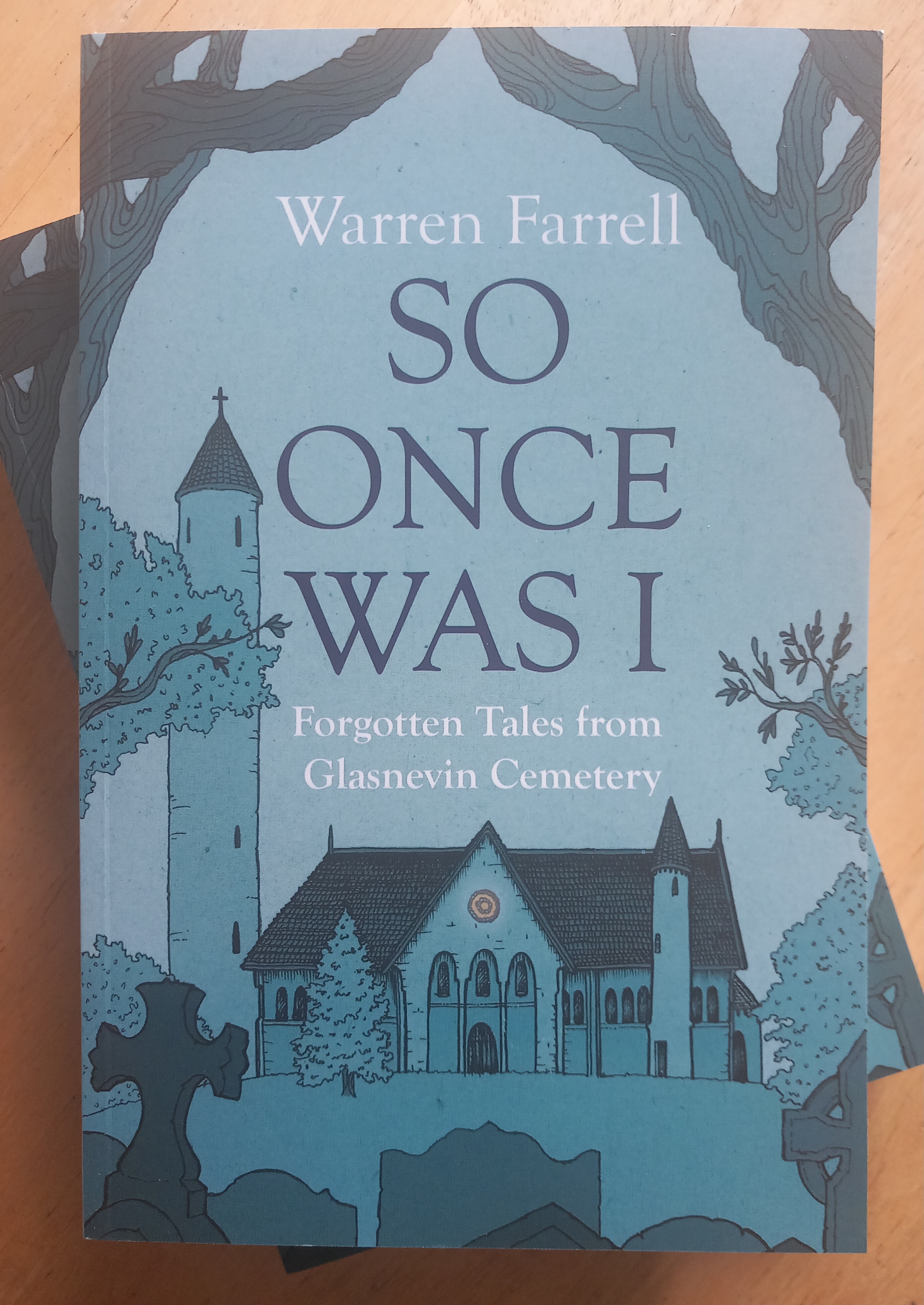
In Máirtín ó Cadhain's novel Cré na Cille , the dead inhabitants of the graveyard converse with each other , in conversations that carry on their life stories - full of the same petty disputes that filled their lives. The main character is Caitríona - an elderly woman disgusted she has been buried by her son in the fifteen shilling plot, not the bestter located £1 plot.This story came into my mind as I read So Once was I - Forgotten Tales From Glasnevin Cemetery, a hugely impressive debut from young Dublin historian and author Warren Farrell.
As an experienced tour guide at Glasnevin Cemetery , there is hardly a better placed writer to detail the rich history of Ireland's de facto National Cemetery. It may well be said that the dead are not truly dead until they have been forgotten, and this books seeks to be a reminder of the stories behind each gravestone, and with each grave be it grandiose or unmarked. Every grave is a story - that of a life lived and a life lost, of achievement and failure, of fame and - in most cases, obscurity.
So Once was I casts a new eye on those lines of gravestones in Glasnevin, on rich and on poor, and how the sometimes forgotten dead can still speak. Farrell's skill in this hugely promising debut is to take the lives of a hugely diverse range of people - Napoleonic War soldiers, lion tamers, gynecological surgery pioneers and stars of the Dublin stage - and give them all a 'voice'. This excellent book works on several levels - a conversation on death, on transience and fading fame , on Ireland's past, and on the physical level, in exploring the history of the cemetery itself - the sculptors and artists who created the many ornate gravestones and memorials that commemorate the dead.
Glasnevin Cemetery itself is a huge physical space - while many ( including this reader on his first visit) tend to concentrate on the 'famous' graves of republicans and notable historic figures located near the main entrance off the Finglas Road - Parnell, Griffith, Collins, De Valera and a myriad of others, the rest of the cemetery is as diverse in its own way. The interconnected history of those buried in the cemetery is what jumps out from this book - the fact that James Pearse ( father of Pádraig Pearse) was a noted stonemason and stone carver of gravestones in the cemetary where many followers of his son now lie, with the proceedings from estate from his business was used by Pádraig to found St Enda's. The writers ( prominent Northsiders such as Behan amongst them) buried in Glasnevin are also a diverse grouping - Rosa Mulholland, ( Lady Gilbert' ) the hugely succesful author of macabre tales ( whose work has recently been republished by Swan River Press) , poet Dora Sigerson Shorter ( whose grave is unmarked) , and Maura Laverty, author of novels and cookbooks ( including the ever popular Full and Plenty) whose own life was worthy of a novel.
Physically, the book itself is an excellent piece of production from Merrion Press, with sections laid out thematically. It also opens with an outline history of the cemetery itself from 1832 up to the recent renovations and refurbishment which accompanied the Decade of Centenaries commemorations.
Fully indexed, with period and recent photographs throughout, this will become the standard work on the history of Glasnevin.
I look forward to more forthcoming history books from the author.
Tomás Conneely
THEBOOKSHOP.IE
 Euro
Euro
 British Pound
British Pound

